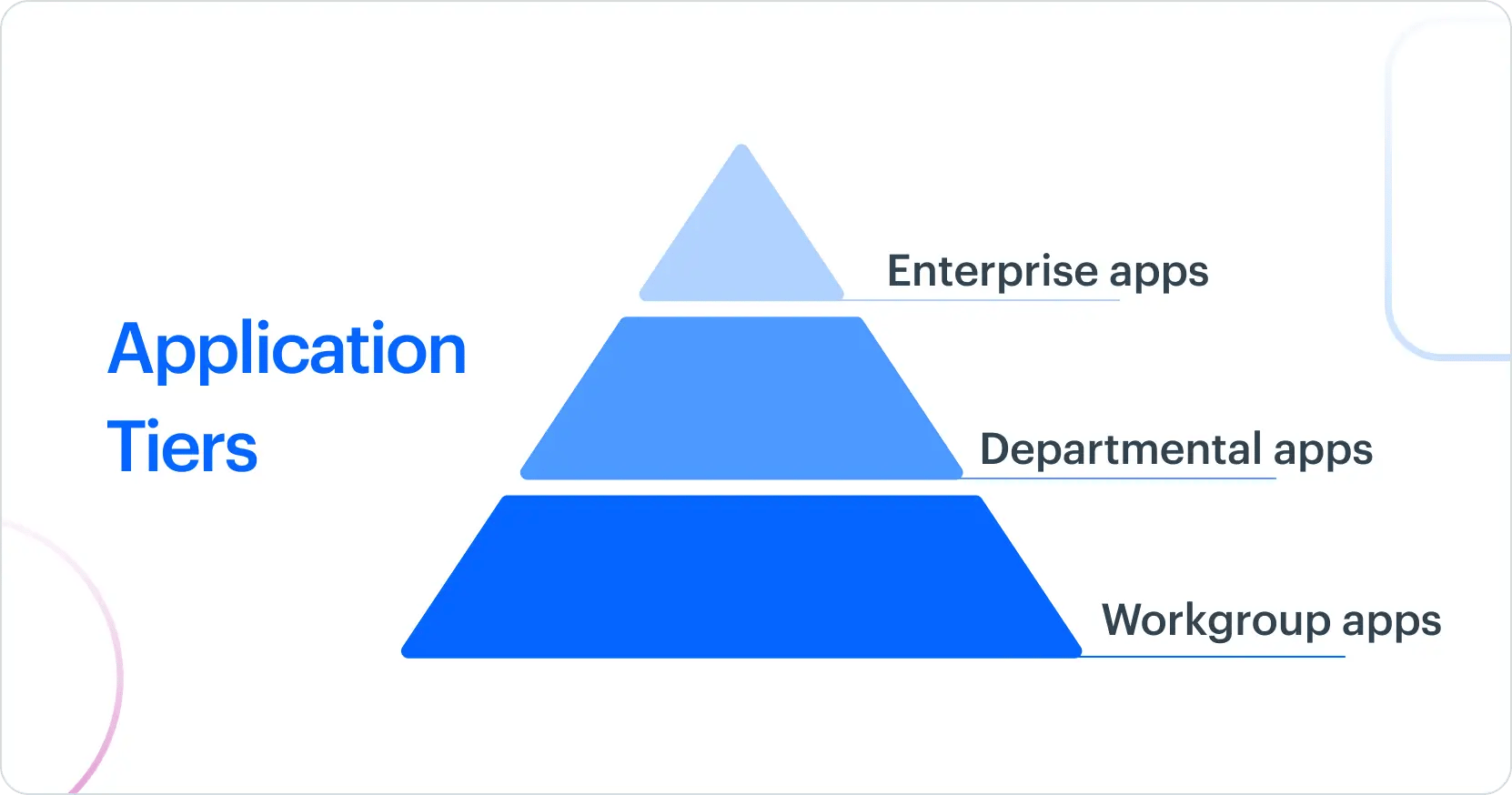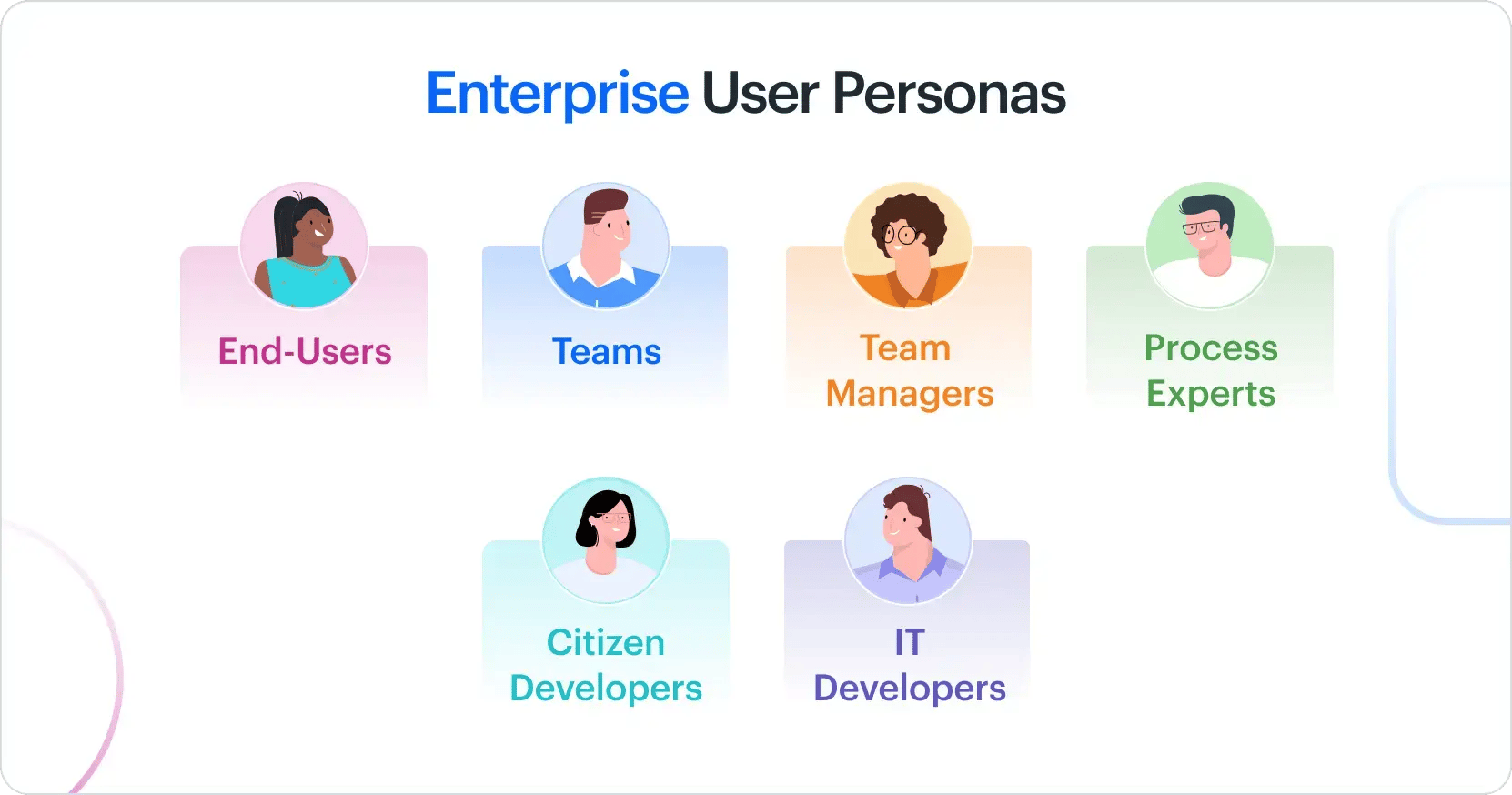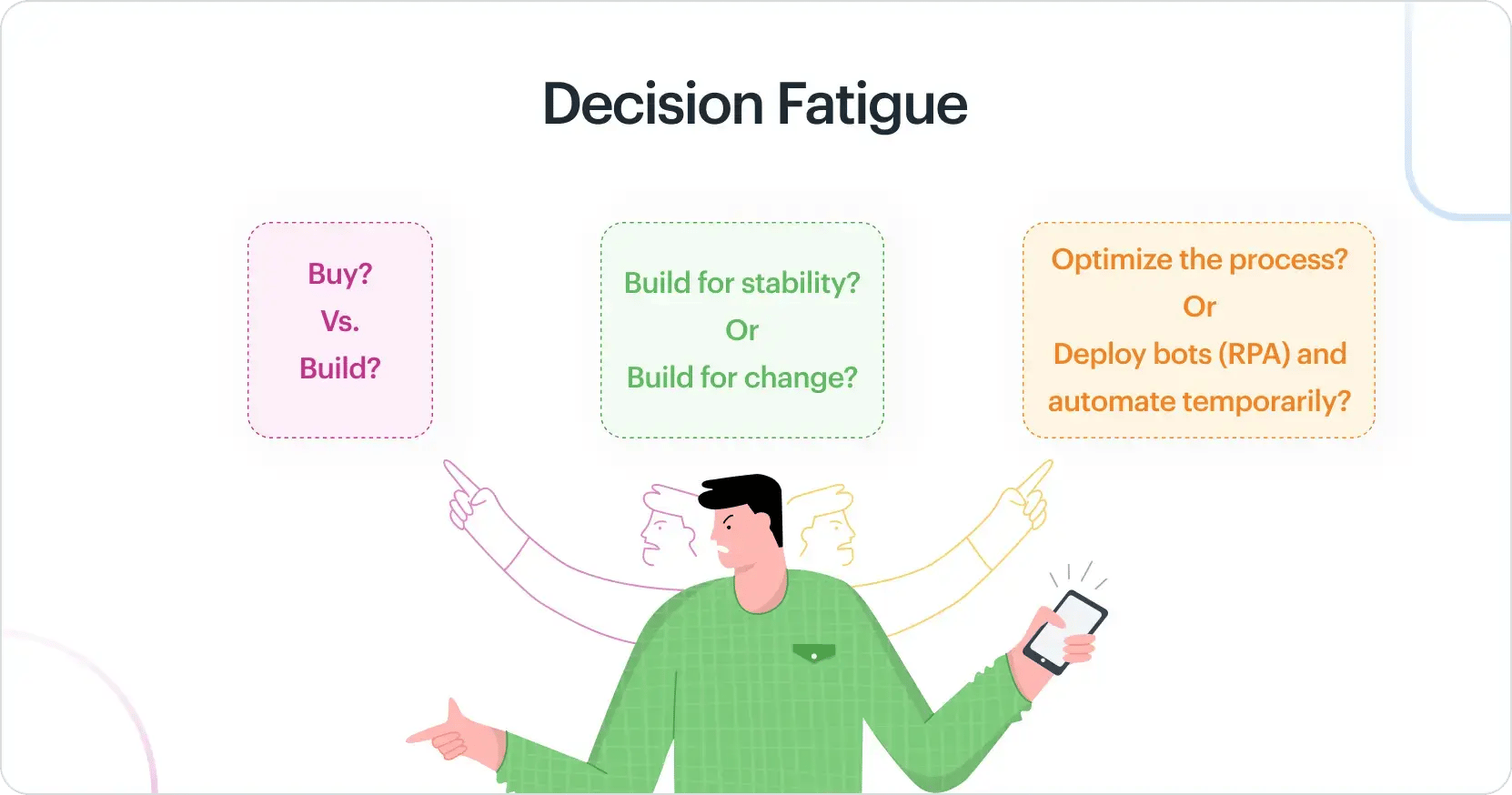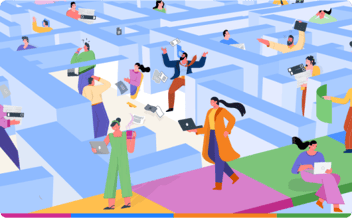As organizations increasingly adopt citizen development practices, understanding the scope of applications citizen developers can build is essential. This chapter explains the tiers of applications and the role of citizen developers in each, introducing the concept of tiered app development.
Know why citizen development is the future of app development
We'll also explore real-life examples of Tier 1, 2, and 3 apps, clearly showing their functions and complexities. Plus, we'll address common questions about how long it takes to build apps using low-code/no-code platforms, showcasing the efficiency and flexibility these tools bring to app development.

1. What kind of applications can citizen developers build?
There are different types of applications that citizen developers can build. However, it’s a best practice to categorize applications into tiers based on complexity. This approach is called tiered app development - a structured approach for citizen developers to contribute to app development effectively based on the app's criticality and complexity.
There are three different tiers of applications:
-
Tier 1 applications
While citizen developers may have limited involvement in Tier 1 applications due to their complexity, they can still contribute under the guidance of IT professionals. These applications are mission-critical and connect directly to core systems, such as universal claims management systems.
-
Tier 2 applications
Citizen developers can play a more active role in building Tier 2 applications supporting departmental operations. Examples include shift management systems and order management systems. Although these apps require systemic planning, they are less complex than Tier 1 applications.
-
Tier 3 applications
Citizen developers can take the lead in building Tier 3 applications, which typically focus on performing a single function exceptionally well. These applications support internal operations and are rarely customer-facing. Examples include project management boards, expense approvals, and event planning tools.

2. What are some examples of Tier 1, 2, and 3 apps?
|
Tier 1 Applications
|
Tier 2 Applications
|
Tier 3 Applications
|
| Enterprise Resource Planning (ERP) System |
Shift Management System |
Project Management Board |
| Customer Relationship Management (CRM) System |
Order Management System |
Expense Approval System |
| Electronic Health Record (EHR) System |
Inventory Management System |
Employee feedback system |
3. Who are the personas that will use, build, and manage apps on a low-code/no-code platform?
| User |
Responsibility |
How they use the platform |
|
Support and Service Teams, Project Managers, and Team Managers (Teams & Team managers)
|
Oversee project/task management, IT Service Management (ITSM), and case management
|
Utilize the platform to streamline processes and ensure efficient operations
|
|
Process Owners and Process Experts
|
Manage and optimize business processes to enhance workflow and efficiency
|
Use the platform to design, automate, and improve processes
|
| Information Technology (IT) developers |
Build and manage both simple and complex applications
|
Use the platform to clear IT backlogs and oversee citizen development
|
|
End-users
|
Adopt the apps to improve the efficiency of everyday operations. Access or request resources from the built apps
|
Use the apps for data entry, collaboration, and other routine tasks
|
|
Citizen Developers
|
Focus on building simpler applications without extensive coding knowledge
|
Create apps tailored to specific business needs, often within their respective departments or teams
|


4. Why should you consider building apps over buying them?
Building apps in-house offers greater stability and reliability than off-the-shelf software. With internally developed apps, organizations can continuously monitor, maintain, and update them to meet evolving needs, minimizing the risk of system failures or downtime.
When organizations opt to buy software, they often encounter limitations in customization, as the pre-packaged features may not fully meet their needs. Customizing off-the-shelf software to fit specific workflows and requirements can be challenging and require significant time, effort, and resources. Additionally, modifications to the software can result in increased complexity, potential compatibility issues, and ongoing maintenance challenges.
Building apps in-house allows for higher customization and integration capabilities, organizations can develop features and functionalities specific to their unique workflows and requirements, ensuring easy integration with existing systems and processes. This level of customization and integration is not possible with off-the-shelf solutions. By building apps, companies can achieve a more cohesive and efficient IT environment, perfectly aligned with their strategic goals.
Also, IT leaders can develop apps internally to avoid decision fatigue associated with evaluating numerous off-the-shelf options. Instead, they can focus on creating solutions tailored to the organization's needs, streamlining the decision-making process, and ensuring optimal outcomes.

5. How long will a citizen developer take to build apps using a low-code/no-code platform?
Citizen developers can use a low-code/no-code platform to build applications in weeks rather than months.
With sufficient training, citizen developers can build a minimum viable product (MVP) in a fraction of the time it would take traditional methods. Low-code/no-code platforms can slash development time by 50%-90%. Read more about this.

















